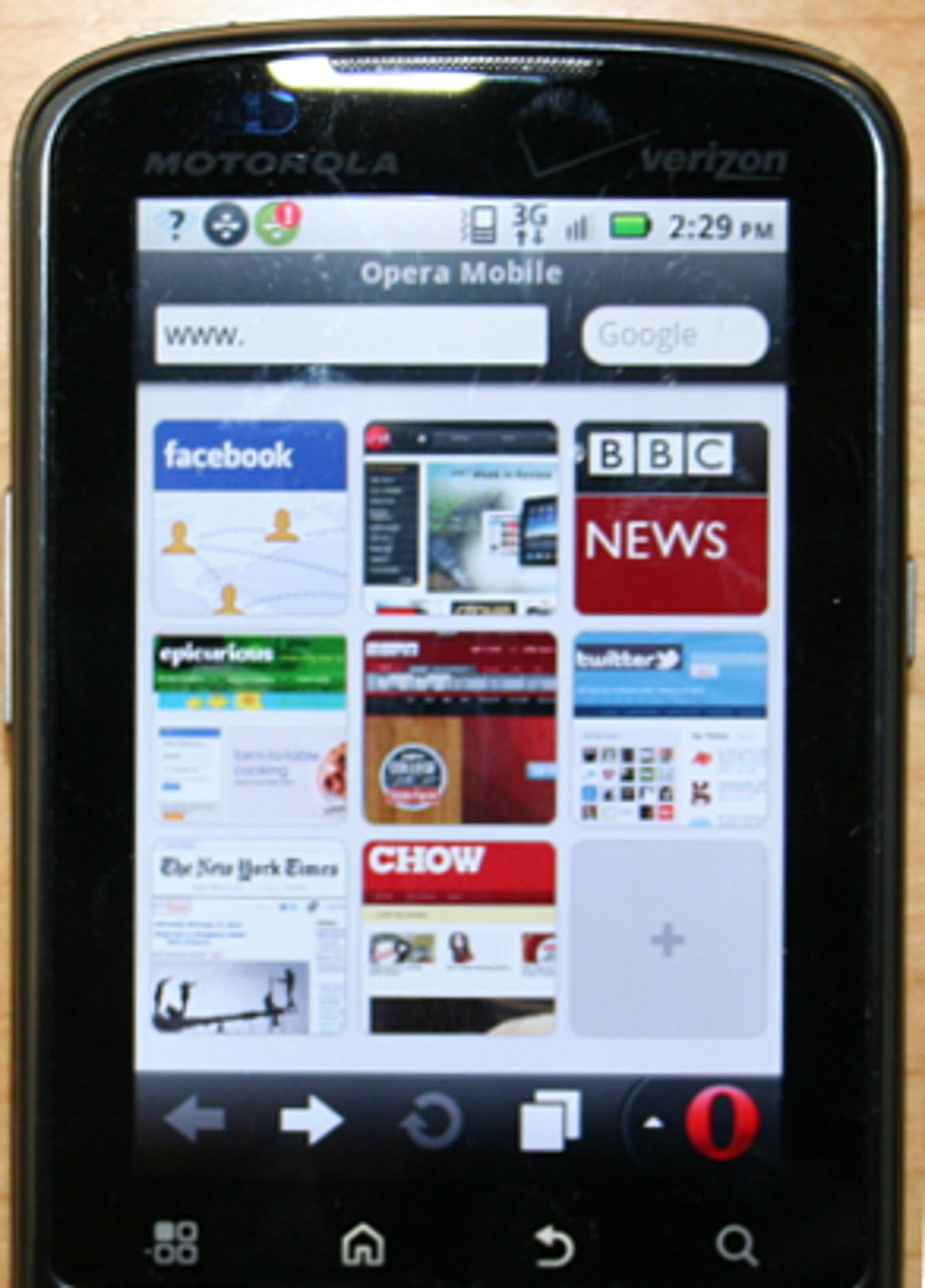Opera announced last week that it would launch two new mobile browsers at CTIA—Opera Mobile 11 and Opera Mini 6–but when it came to new and enhanced features, it mostly kept quiet.
We were lucky enough to get our hands on a preview build before the show, and can share a lot more about what’s in store for Opera on mobile phones and tablets.


Photograph by Jessica Dolcourt/CNET
Starting with the interface, the Opera browser gets a little bump in sophistication on an already graphically rich display. Opera loyalists will note some subtle changes–Opera has shaved off the title bar to give its browser more room, the Settings icon has changed into the Opera “O” icon, and the search engine selector has further retreated within the search field.
A sharing menu shortcut is a new feature to hit the browser duo. Pressing the “O” icon pulls up the options screen. In addition to bookmarks, history, settings, downloads, and so on is the option to share via e-mail, text, Twitter, Facebook, and other social networks.
You also get pinch-to-zoom across the board on all compatible devices supported by both browser versions. Before, you sometimes had to tap to zoom in. Opera says it has also enhanced the scrolling, panning, and zooming.
Opera is also jumping on the tablet craze by optimizing Mini and Mobile for the larger tablet screens. On the Motorola Xoom (running Android 3.0 Honeycomb) that we loaded it on, Opera Mobile looks almost the same as it does on an Android smartphone, except that the navigation bar moves to the top.
Overall, Opera worked quickly and smoothly, with just two exceptions. Opera had no problem loading Web sites, but we found one (Chow.com) whose loading width must have confused the browser because the image rhythmically shrank back, then expanded until we tapped it. (Chow.com is a part of CBS Interactive, which also publishes CNET.) Another outlier issue is that Opera Mobile did not properly load a Web page we needed to authenticate CNET’s public Wi-Fi. We had to open the default browser before we could use Opera. This has been a challenge for Opera for years, and one gap in its service that, while it won’t affect most people, demonstrates a weakness that a browser of this caliber should have long overcome.
Opera Mini 6–the more condensed, speedier, proxy version–will be available on Android, BlackBerry, Symbian/Series 60, and Java (J2ME) phones. Opera Mobile 11–the native, standalone browser–will be compatible with Android, Symbian, Windows 7 (think tablets), and MeeGo.
You can download either of the free browsers in your device’s app store (this may not be true for all) or by pointing the browser to m.opera.com. Then, let us know what you think about the new Opera Mini and Opera Mobile.



